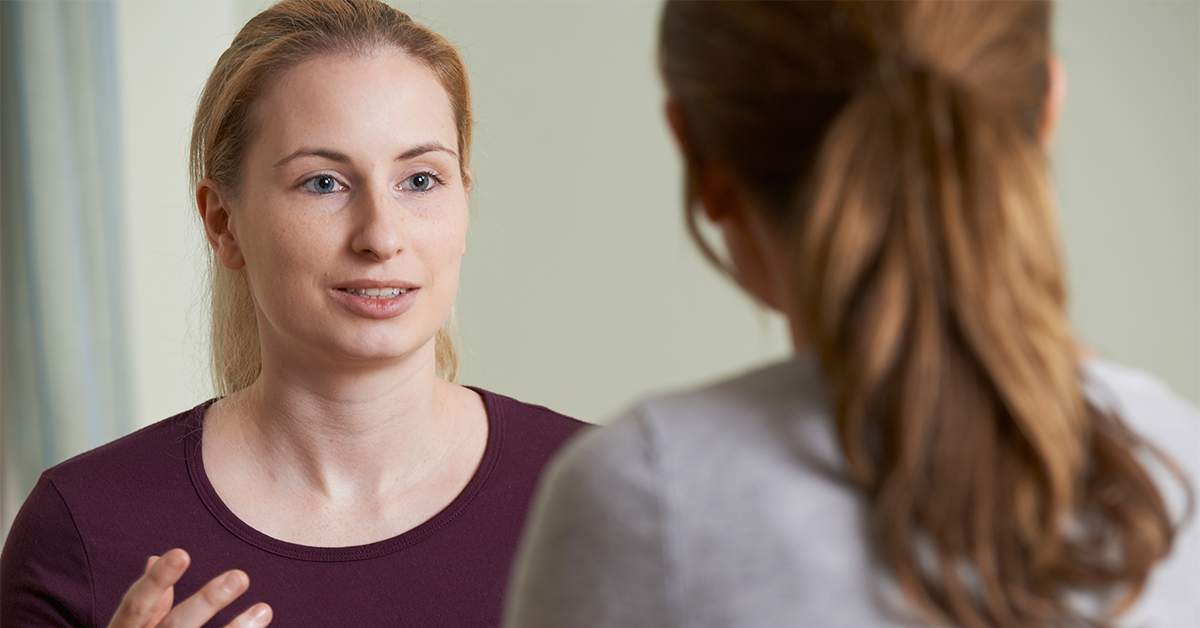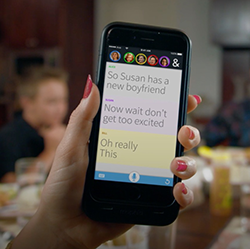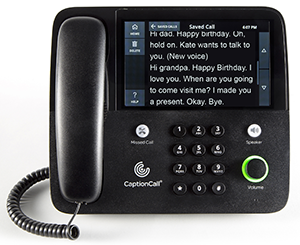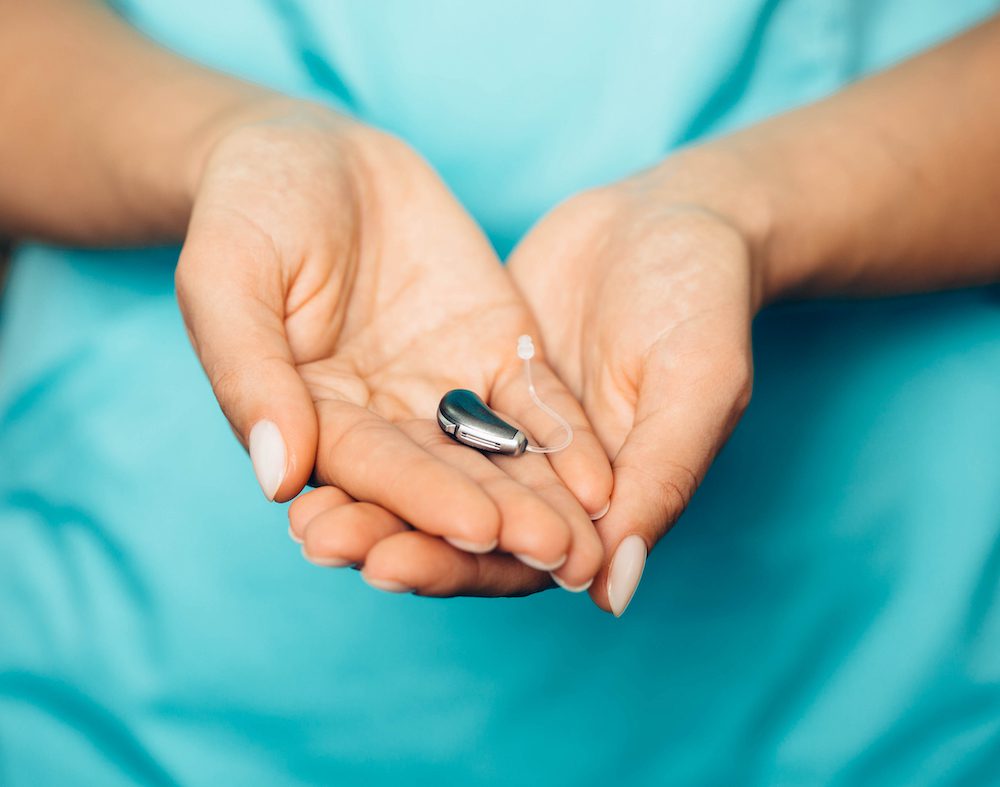I Have Trouble Hearing Because We Are All Wearing Masks! – Live Captioning for Better Communication
Whether you have a hearing loss or not, watching the face

By: admin | April 28, 2020
Whether you have a hearing loss or not, watching the face of the speaker may help you better understand the conversation. Speech sounds correspond to different mouth positions, and our brain can link these two modes of communication.
People with hearing loss may find that they rely more heavily on lip reading and visual cues when speech is not clear. There is a noticeable improvement in understanding when they are face-to-face with someone than when the person is looking away or covering their mouth. With the CDC recommendations for face coverings due to the novel coronavirus pandemic, we are all facing new challenges. Most face masks significantly limit the visual information that people with hearing loss depend on. Due to the shelter in place requirements, many people are also relying more heavily on the phone for communication rather than in-person interactions.
While these measures are crucial for protecting public health, they can make communication more difficult for the hearing impaired. If you’re experiencing any of the problems described below, give these easy-to-use captioning services a try!

While not perfect, live captioning and transcription apps can provide additional information that will make it easier to follow the conversation. Here is some information on several apps that we have tried.
Ava is a live transcription app that is great for people with or without hearing loss. Ava and apps like it access your phone or tablet’s microphone and transforms live speech into text, allowing you to read your conversation in real time. Once you create an account, simply speak near the microphone of your device and you’ll see the speech transformed to text on the screen. The app functions the best when the device’s microphone is close (within about 12 inches of the speaker). This may be difficult, while trying to maintain social distancing. Just make sure that you point the microphone as close to the speaker as possible. For conversations that have multiple speakers, encourage each speaker to join in with their device. By using two or more devices, you can more easily keep track of the speaker. Once you stop captioning, the transcribed conversation is automatically saved in case you need to reference it later. Ava is very easy to use. Once you’re logged in, simply open the app and your automatic transcription will begin.
Requirements: Smartphone or Tablet (Android, iPhone), Internet connection
Cost: 5 hours of free transcription every month (more time can be purchased)
Get Started! Visit https://www.ava.me/ to learn more or download the app to your device.
Another great transcription app is Otter. This app works similarly to Ava but has some additional features which may help when you’re in groups or at a meeting. Otter offers live transcription, as well as, subsequent processing of the speech. The processing that occurs once you finish your transcription provides a summary of key words, the ability to play back the audio of your meeting, and some detection and labeling of the speakers in a conversation. The audio playback feature may be useful for those using transcription for important conversations such as meetings or doctors’ appointments. Automatic transcription services do not always interpret with 100% accuracy, so the audio recording is a good way to review and confirm what was said later.
Requirements: Smartphone or Tablet (Android, iPhone), Internet connection
Cost: Basic Plan is free for the first 600 minutes per month (10 hours), if you need more time, subscriptions start at around $8.83 per month
Get Started! Visit the Otter website to learn more or download the app to your device. https://otter.ai/
Which app should I choose? We have found that Ava may be better for casual conversational use while Otter’s extra features may come in handy during meetings or appointments where you might need the audio as well as the text. Ava and Otter are both great transcription apps which seem to have similar levels of accuracy. Keep in mind that both programs use computer programs to automatically change speech to text, so they may not always be 100% accurate. To maximize the accuracy, make sure to speak clearly and keep the microphone as close to the person speaking as possible.
In this time of social distancing, you may find yourself relying more heavily on the phone for daily communication. The MyCall-to-Text app is a quick way to turn any phone into a captioned phone. Once downloaded, connect your contacts to the app. Choose or dial the phone number you’d like the call, and the conversation will automatically appear on the screen during the conversation. In addition, rather than speaking, you can type your responses and they will be spoken to the person on the other end. The MyCall-to-Text is designed by Phonak, a hearing aid company, but hearing aids are not required to use this app.
Requirements: Smartphone or Tablet (Android, iPhone), Internet connection
Cost: Free for calls made to others with the app, 30 minutes of call time to other phones. Additional minutes may be purchased through the app.
Get Started! Visit https://www.phonak.com/us/en/hearing-aids/apps/phonak-my-call-to-text-app.html to learn more and download the app to your device.
For those with significant difficulty on the phone due to a hearing loss, you may qualify for free telecommunication services through a provider like CaptionCall. CaptionCall offers an app for the iPad at no charge to the user. Your audiologist must certify that you would benefit from this program. Once the paperwork is submitted and the app is downloaded, you’ll be able to make phone calls and see the conversation appear on the iPad screen. No iPad? See below for information regarding the landline service.
Requirements: Need for use must be certified by an audiologist or other healthcare provider.
Cost: None to the qualified user, paid for by the federal government as part of the Americans with Disabilities Act
Get Started! Visit https://captioncall.com/ and contact your audiologist or health provider to discuss certification.
Without downloading any extra programs, you may already be familiar with programs that can support your hearing with visual cues such as Facebook, Facetime, Skype, WhatsApp or Zoom. Rather than making an audio-only phone call, try using the video feature. Video conferencing restores the important visual cues people with hearing loss can benefit from. Most of these platforms also allow for more than two people, so this can be a fun way to get the whole family together!
Bonus Tip: If visual cues aren’t enough for these calls, consider using a combination of the strategies discussed here. While in a video conference, turn on the Ava or Otter app and place near your computer speakers. If you have paid accounts for Zoom and Otter, these programs can be linked so that your Zoom calls will be captioned on the screen. You’ll have access to the video and captioning at the same time! Some video conferencing apps like Zoom also have phone numbers to call in for audio. If you make the call via your MyCall-to-Text app your meeting with automatically be captioned!

In addition to the iPad app, a number of companies offer a landline phone which can provide the captioning service. These landline phones are provided at no charge to the user by the company and have a large, easy to read screen. The volume can easily be increased from the phone as well to maximize understanding over the phone. Like with the app, your audiologist must certify that you would benefit from a caption phone. Once the paperwork is submitted, the company can help you get the phone up and running.
Currently there are 3 companies that provide the phone captioning service. Our clinic is most familiar with CaptionCall. The other 2 companies are CaptTel and ClearCaptions.
Requirements: Need must be certified for use by an audiologist or other healthcare provider
Cost: No charge to the qualified user, paid for by the federal government as part of the Americans with Disabilities Act
Get Started! Contact your audiologist or health provider to discuss certification and visit these companies to see which phone might be best for you.
Caption Call visit https://captioncall.com/
CapTel visit https://www.captel.com/
ClearCaptions visit https://clearcaptions.com/
As you can see, there are many tools for all kinds of situations. Audiologists are trained in all aspects of hearing and communication, not just hearing aids. If you’re not sure which might be the best option for you, we would be happy to recommend a program and discuss how these applications can be incorporated into your life. Contact us! https://betterhearingct.com/contact-us

Dr. Samantha Hauser, is an audiologist at the Easterseals Center for Better Hearing, she practices primarily in the Center’s Waterbury and Meriden Locations.

Whether you have a hearing loss or not, watching the face
By: admin | April 28, 2020

The Bradley Henry Barnes & Leila Upson Barnes Memorial Trust at the
By: admin | November 12, 2019

Though you might consider a discussion of hearing aids batteries to be
By: admin | May 3, 2017
